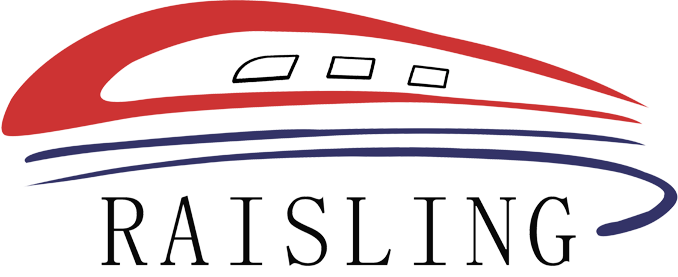-
ProductsAt present, the company has the ability to produce 50000 tons of rail buckle accessories annually. The product series includes various specifications of spring bars Gauge baffles, switch special pads, joint clamps for 43kg, 50kg, 60kg steel rails, various export products, etc

-

-
AboutThe company was established in 1994 and is a production enterprise specializing in the research and development, production, and sales of railway line specific accessories

Understanding Rail Fasteners: The Backbone of Rail Infrastructure
Jun 08,2025
Rail fasteners are critical components of railway infrastructure, essential for maintaining the integrity and safety of rail systems. These fasteners connect the rails to the sleepers (or ties) and serve to secure the rails in place, ensuring they remain aligned and stable under varying loads and conditions. The importance of rail fasteners cannot be overstated; they are integral to the overall pe

There are several types of rail fasteners, each designed to accommodate different types of rail and track configurations. The most common types include elastic rail clips, bolt-and-plate systems, and shoulder bolts. Elastic rail clips are widely used due to their ability to provide a firm grip on the rail while allowing slight adjustments for track alignment. These clips work by utilizing spring-like properties that help absorb vibrations and maintain the necessary tension on the rail.
Bolt-and-plate systems, on the other hand, consist of a combination of bolts, plates, and nuts that secure the rail to the sleeper more rigidly. This method is often used in heavy-duty applications where the rail must withstand significant forces, such as freight transport. Additionally, shoulder bolts can be found in various rail systems, particularly in situations requiring enhanced stability and alignment support.
Proper maintenance of rail fasteners is essential to ensure the safety and efficiency of railway operations. Over time, fasteners can wear down due to environmental factors, heavy use, and stress from passing trains. Regular inspections and timely replacements are crucial in preventing track misalignment, which can lead to derailments or other accidents. Many railway companies implement routine maintenance schedules, focusing on visual inspections and the use of advanced technologies like ultrasonic testing to assess the condition of rail fasteners.
The quality of materials used in rail fasteners is also a critical consideration. Fasteners must be made from durable, corrosion-resistant materials to withstand harsh environmental conditions and the stresses of heavy rail traffic. Innovations in material science have led to the development of high-strength alloys and coatings that enhance the lifespan and performance of rail fasteners.
In summary, rail fasteners are a fundamental aspect of railway infrastructure, ensuring the safety and stability of the rail system. Understanding their types, functions, and maintenance needs can help stakeholders in the railway transportation sector make informed decisions. By prioritizing the quality and upkeep of these components, the industry can continue to operate safely and efficiently, ultimately serving the needs of passengers and freight transport alike.
Previous:
Recommended
There is one sheet production line and two high-precision engraving machines, with an annual production capacity of 6 million railway special height adjustment pads.
Electrostatic spraying workshop
There is one electrostatic spray equipment production line and one spray paint production line, with an annual production capacity of 10,000 tons.
Contact Us
Henan Xinda Railway Equipment Co., Ltd
Fax: +86-372-2615999
Tel: +86-18567891234
Email:info@xindarail.com
Send us your request
we will get in touch with you as soon as possible
COOKIES
Our website uses cookies and similar technologies to personalize the advertising shown to you and to help you get the best experience on our website. For more information, see our Privacy & Cookie Policy
COOKIES
Our website uses cookies and similar technologies to personalize the advertising shown to you and to help you get the best experience on our website. For more information, see our Privacy & Cookie Policy
These cookies are necessary for basic functions such as payment. Standard cookies cannot be turned off and do not store any of your information.
These cookies collect information, such as how many people are using our site or which pages are popular, to help us improve the customer experience. Turning these cookies off will mean we can't collect information to improve your experience.
These cookies enable the website to provide enhanced functionality and personalization. They may be set by us or by third-party providers whose services we have added to our pages. If you do not allow these cookies, some or all of these services may not function properly.
These cookies help us understand what you are interested in so that we can show you relevant advertising on other websites. Turning these cookies off will mean we are unable to show you any personalized advertising.
COOKIES
Our website uses cookies and similar technologies to personalize the advertising shown to you and to help you get the best experience on our website. For more information, see our Privacy & Cookie Policy
COOKIES
Our website uses cookies and similar technologies to personalize the advertising shown to you and to help you get the best experience on our website. For more information, see our Privacy & Cookie Policy
These cookies are necessary for basic functions such as payment. Standard cookies cannot be turned off and do not store any of your information.
These cookies collect information, such as how many people are using our site or which pages are popular, to help us improve the customer experience. Turning these cookies off will mean we can't collect information to improve your experience.
These cookies enable the website to provide enhanced functionality and personalization. They may be set by us or by third-party providers whose services we have added to our pages. If you do not allow these cookies, some or all of these services may not function properly.
These cookies help us understand what you are interested in so that we can show you relevant advertising on other websites. Turning these cookies off will mean we are unable to show you any personalized advertising.

